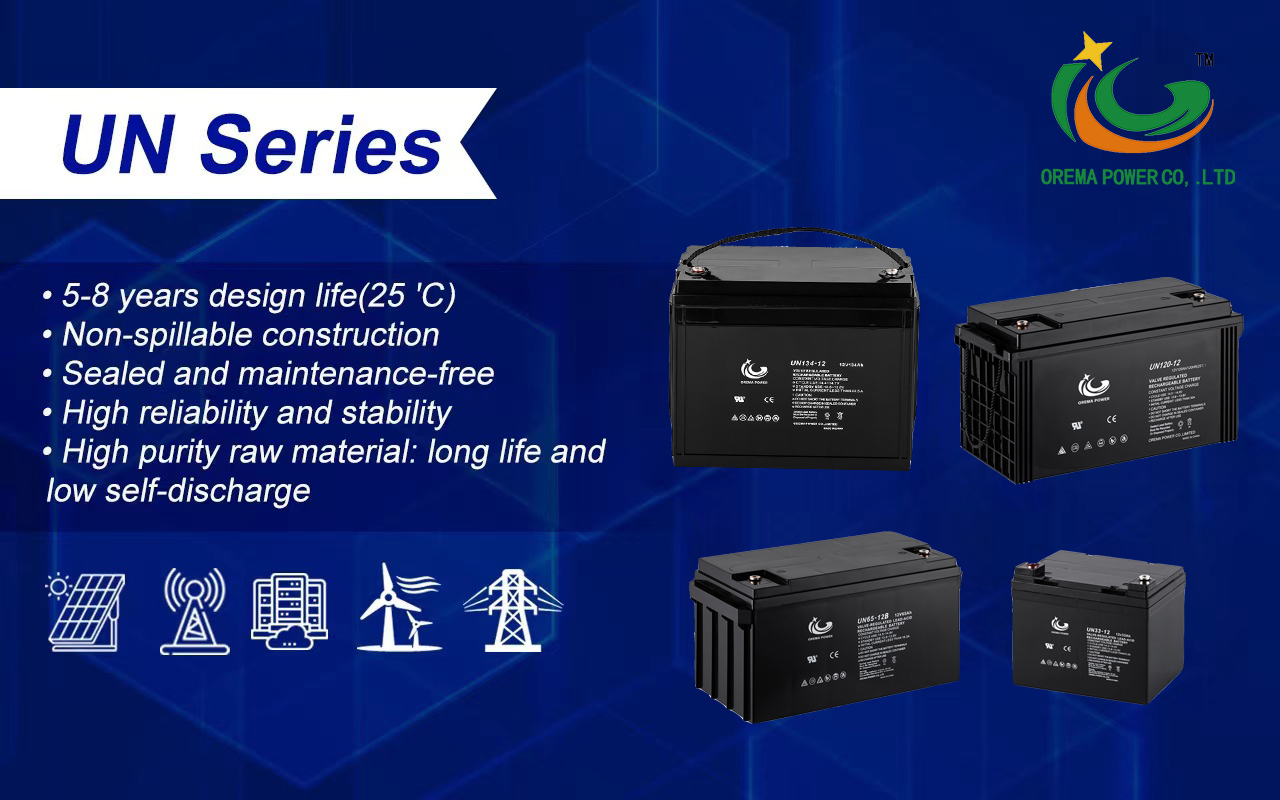OREMA UN series 12V AGM batteries represent the zenith of sealed lead acid battery technology. Fabricated with ultra-high purity lead, these 12V Rechargeable batteries set the standard in performance and durability, serving a multitude of applications with unmatched efficiency.OREMA 12V AGM Battery is designed for diverse applications, from emergency backup and renewable energy systems to UPS and recreational vehicles. Their robust construction and reliable performance make them suitable for a wide array of uses, ensuring uninterrupted operation in critical situations. OREMA UN series 12V AGM batteries are not just about providing power; they are about delivering reliable, safe, and efficient energy solutions across a variety of applications. With OREMA, you choose more than a battery; you choose a partner committed to powering your success in the digital age and beyond. 12v AGM Batteries,12v AGM Battery,12V lead acid battery,12V Rechargeable batteries,12V VRLA Batteries OREMA POWER CO., LTD. , https://www.oremapower.com
Innovative AGM Technology:
At the heart of OREMA UN Series 12V VRLA Batteries is the advanced Absorbent Glass Mat (AGM) technology. This technology ensures safety and flexibility in installation by absorbing the electrolyte in a fiberglass separator. It effectively eliminates the risk of leakage, provides excellent resistance to vibration and shock, and maintains a low self-discharge rate. This versatility makes them ideal for both long-term storage and demanding usage scenarios.
Key Features of OREMA UN Series 12V lead acid battery:
- Extended Lifespan: Designed to last 5-12 years at 25℃, these batteries offer exceptional longevity.
- Spill-Proof Design: The non-spillable construction of AGM technology guarantees safety and ease of use.
- Zero Maintenance: These batteries are maintenance-free, adding to their convenience and reliability.
- High-Quality Raw Materials: The utilization of high-purity lead ensures a longer lifespan and minimal self-discharge.
Compliance and Quality Assurance:
OREMA 12V AGM batteries adhere to global standards, including IEC, BS, JIS, and EU regulations. UL and CE certifications, along with ISO45001, ISO 9001, and ISO 14001 certifications of our production facilities, reflect our commitment to quality and environmental stewardship.
Applications of OREMA UN Series 12V Rechargeable batteries:
- Power for UPS Systems: Ideal for providing stable and uninterrupted power in UPS setups.
- Emergency and Backup Power: Dependable in emergencies and power outages.
- Control Systems Support: Crucial for the continuous operation of control systems.
- Communication and Security Systems: Essential for maintaining communication and security infrastructures.
- Electric Power Systems: Suitable for EPS applications, offering consistent and robust power.
Level triggered trigger overview
In real-world applications, the behavior of a flip-flop is not only influenced by its input signals but also by a specific timing reference. To achieve precise control over when the flip-flop changes state, a clock signal is introduced through a clock control terminal. This ensures that any state transitions occur only at specific moments, improving reliability and stability.
1. **Level-Triggered SR Flip-Flop**:
In this type of flip-flop, the clock pulse (CP) acts as a control signal that allows the flip-flop to respond to the input signals R and S. When CP is high (CP=1), the outputs Q and Q' are directly affected by the values of R and S. If CP is low (CP=0), the flip-flop remains in its current state regardless of input changes.
Additionally, the asynchronous preset (SD') and clear (RD') inputs can be used to set or reset the flip-flop. However, these should be activated when the clock signal is low (CLK=0). Otherwise, once SD' or RD' returns to a high level, the previously set state might not be retained due to unintended transitions.
The level-triggered mode has some key characteristics:
- During the entire time CP is high, any changes in the input signals will immediately affect the output states Q and Q'.
- If the input signals change multiple times while CP is high, the flip-flop may toggle multiple times, leading to unstable behavior.
- This phenomenon, known as "toggling" or "race condition," is a common issue in sequential circuits and can lead to unreliable operation.
- For example, if a small positive pulse appears on the S input during CP=1, the output Q may switch to 1 and remain there, even if the input returns to 0.
- When CP is low, the flip-flop remains in its previous state, and no changes occur regardless of input activity.
2. **D Latch**:
A D latch is a simpler form of memory element that follows the D input directly. Its characteristic equation is:
**Q* = D**
This means that the output Q will always match the value of the D input when the clock is active (CP=1). When the clock is inactive (CP=0), the output remains in its last stable state.
Unlike edge-triggered flip-flops, the D latch is sensitive to the level of the clock signal rather than its transition, making it suitable for certain types of sequential logic designs where continuous input monitoring is needed.
By incorporating clock control, digital systems can achieve more predictable and controlled behavior, reducing the risk of errors caused by unpredictable signal changes. Understanding the differences between level-triggered and edge-triggered devices is essential for designing reliable and efficient digital circuits.